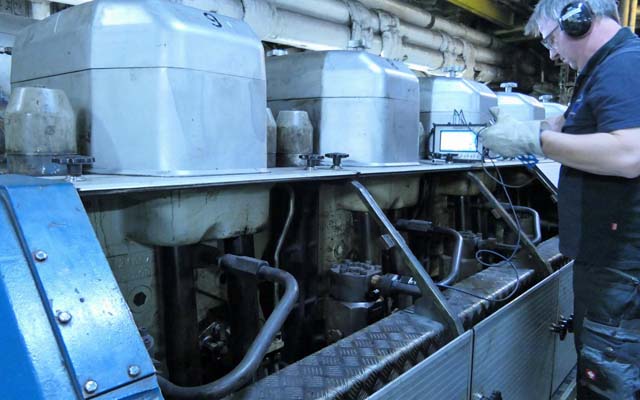Condition monitoring company CM Technologies (CMT) has added a fuel injection acoustic emission sensor to its proprietary Premet X range of two- and four-stroke diesel engine performance indicators.
The new device allows engineers to monitor the acoustic signature of a diesel engine’s fuel injection system to detect any problems with fuel injectors, nozzles, and pumps. Clogged or worn nozzles, leaking injectors, and damaged fuel pumps can affect fuel atomisation and timing, leading to poor engine performance, increased fuel consumption, increased emissions and potentially engine failure.
CMT MD Matthias Winkler said: “Atomisation and fuel injection timing are the most important variables in the combustion process, correlating directly with the amount of fuel consumed and carbon emitted. By monitoring fuel injection frequencies in the in the 300kHz to 700kHz range, we can get invaluable insight about problems with fuel injection and combustion. If not detected in time, less than perfect atomisation can lead to excess fuel consumption, after burning or critical component damage. We have developed the Premet X fuel injection acoustic emissions sensor to prevent this from happening.”
Unlike accelerometer-based sensors, which need to be mounted internally and can be affected by mechanical load, high temperatures and pressures, CMT’s fuel injection acoustic emissions sensor is based around EMAT (electromagnetic acoustic transducer) technology, claimed to be unique in the market. This non-contact ultrasonic technology means there is no need to access internal components. It incorporates a built-in amplifier and a signal conditioning module to monitor frequencies in the 200-700kHz range and since no direct contact is needed, it can measure through coated surfaces, unaffected by pollutants, oxidation or surface roughness. The sensor features a magnetic tip for an easy connection on any metallic surface.
Depending on where the sensor is placed, different aspects of the fuel injection process can be monitored. For example, if the sensor is placed on the cylinder head the injection and exhaust valve timing can be monitored, while the performance of each nozzle can be gleaned by placing the sensor on the relevant tie rod.
Winkler added: “We do recommend that several tests are carried out at different locations for comparative purposes and different places should be tried to identify the most effective place for a measurement. For trending of historical data, measurements should be taken regularly, from the same place.”
Together with the detailed combustion pressure data provided by Premet X, the simultaneous monitoring of noises during the fuel injection process provides a more complete picture of the performance of the engine. This includes important information relating to combustion, ignition, and injection timing, fuel pump activity as well as injection and ignition delay.
Winkler concluded: “Other systems on the market will give you the information about the combustion process by measuring the dynamic pressure inside the diesel engine only. However, if you see a deterioration, you cannot find the root cause of the problem. The additional information provided by the fuel injection acoustic emissions sensor gives marine engineers all the information they need to achieve optimum engine performance and fuel consumption.”
CMT’s fuel injection (acoustic emission) sensor is available as an option with the company’s Premet X diesel performance monitoring system.
Image: CMT’s fuel injection acoustic emission sensor detects fuel injection problems (source: CM Technologies)



